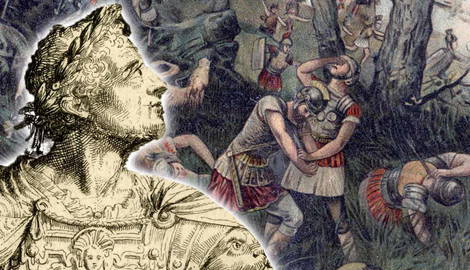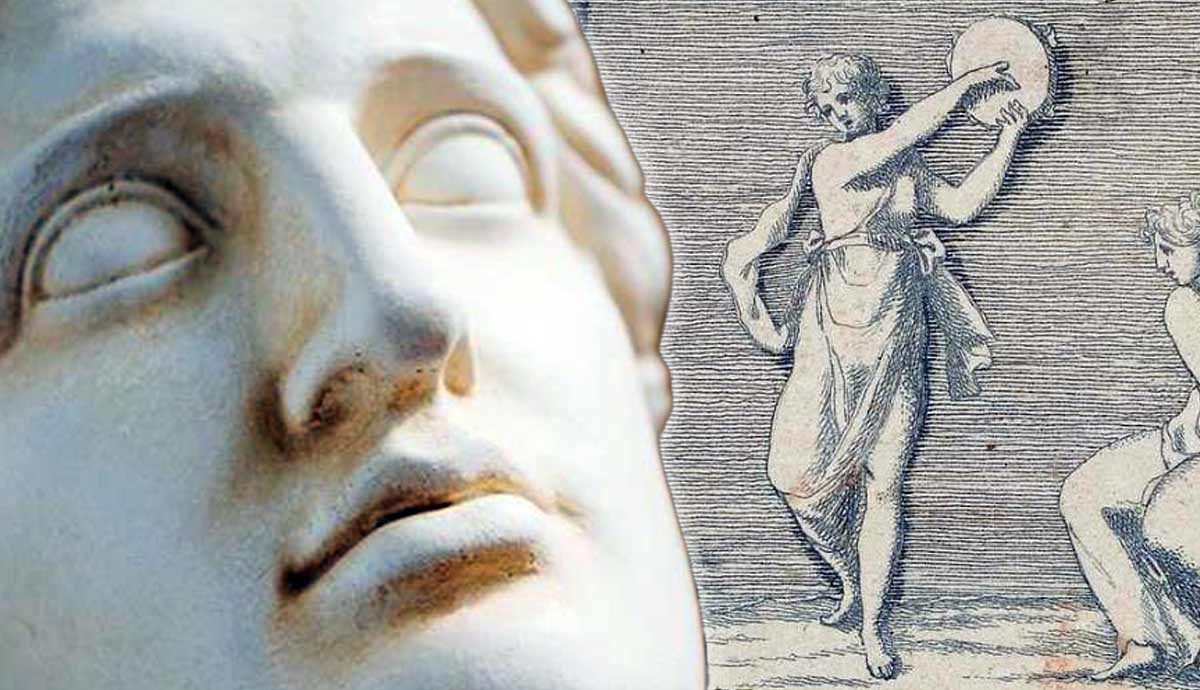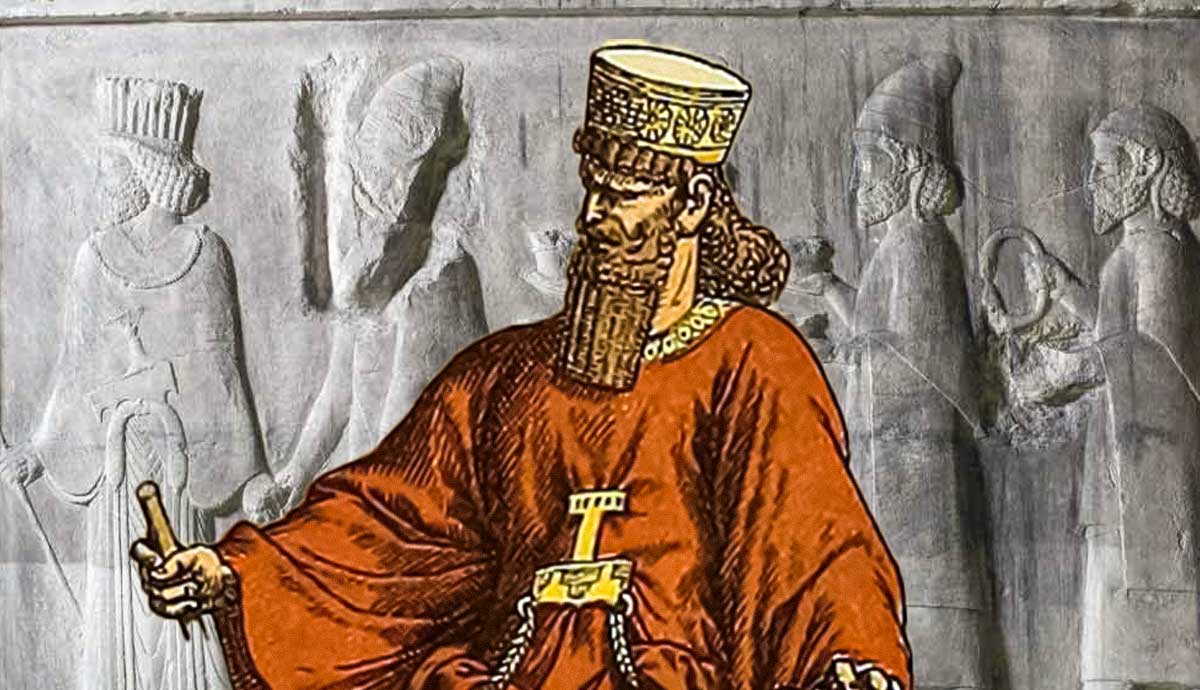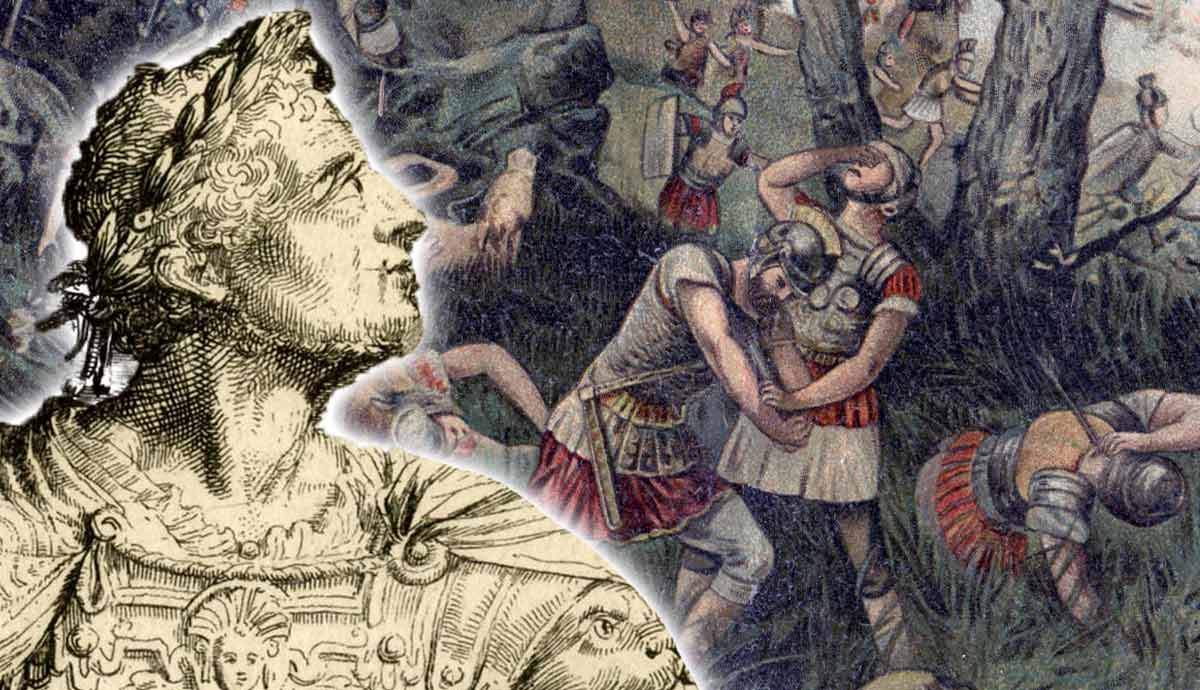
In the mid-4th century CE, the Roman Empire found itself in a precarious position. While the emperor Constantius II had been entrenched in a protracted war against the Sassanids in the East, the other Augustus, Constans, was murdered by the Germanic usurper, Magnentius. The power vacuum in the West prompted a significant rebellion, jeopardizing the Empire itself. Shorn of alternatives due to dynastic bloodletting, Constantius II ordered his young cousin, Julian, into the breach. With no military experience and an inclination toward philosophical pursuits, Julian soon forged a reputation for leadership, culminating on the blood-soaked fields at the Battle of Strasbourg.
Background: The House of Constantine
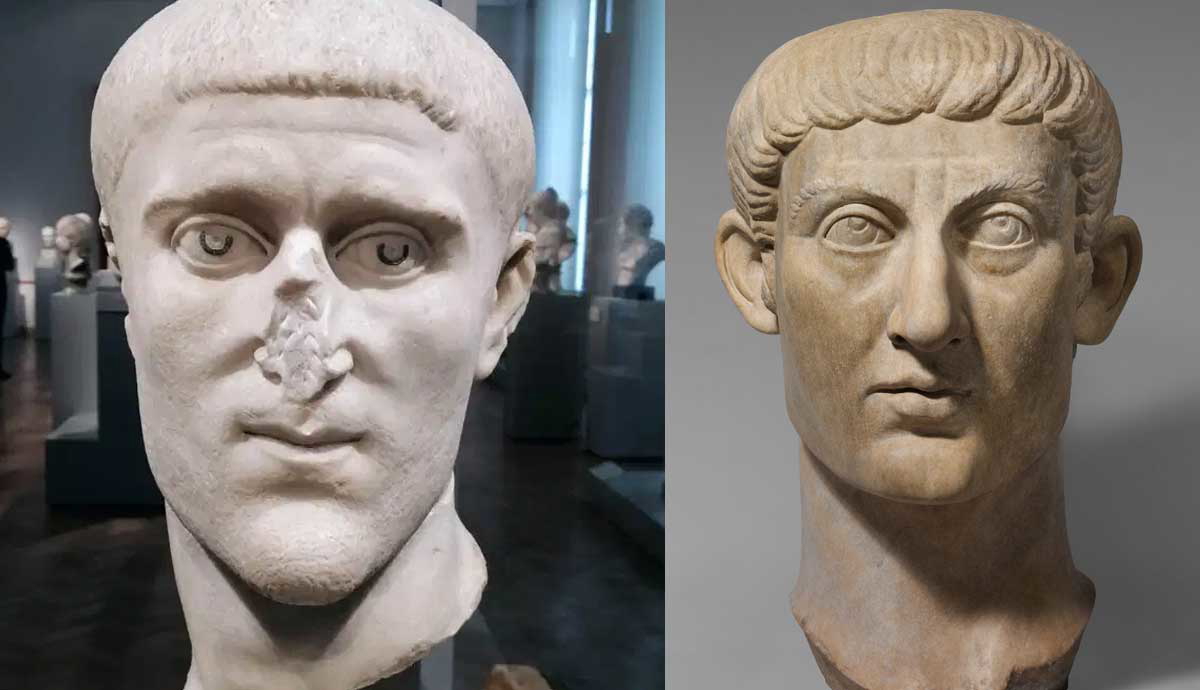
The Constantinian dynasty ruled over some or all of the Roman Empire since the early 4th century. Constantius I (also known as Constantius Chlorus) was part of the Tetrarchy, which Diocletian devised to restore some stability to the Empire after the various crises of the 3rd century.
In the Tetrarchy, imperial power was divided among four rulers: two senior rulers (the Augusti), and two junior partners (the Caesares). In 305 CE, Constantius Chlorus was elevated to the rank of Augustus of the West. It was a short-lived promotion. After his death, the soldiers in Britain acclaimed his son as emperor. This was to be one of the most fateful decisions in history: whether he was a historical “great” or not can be debated, but the historical impact of Constantine as emperor is irrefutable.
As emperor, Constantine effectively broke down the Tetrarchy system. The division of power was forgotten, and the Empire was again ruled by one man. The new emperor also ushered in a period of profound cultural and social change. This was not only a result of his acceptance (and later adoption) of the Christian faith, but also because of his decision to move the center of imperial power away from Rome by establishing a new capital on the Bosporus: Constantinople. However, despite the innovations of Constantine’s reign, it was plagued by very traditional political violence, as the emperor and those close to him vied for supremacy.

Following Constantine’s death in 337 CE, the Empire was ruled by his two surviving sons: Constans (ruler in the West) and Constantius II (ruler in the East). In early 350, however, Constans had been killed by the usurpation of Magnentius, a Germanic commander. This was bad news for Constantius. The notoriously cruel and paranoid emperor may not have felt much remorse at the loss of his brother (it was one potential rival less to contend with in the future), but the political situation in the Empire was deteriorating at an alarming rate. When his brother had been murdered, Constantius was engaged in a protracted war against the Sassanids in the East, and at the same time, there was severe unrest in the Balkan regions.
Although he was eventually able to restore some order, Constantius recognized the need to install a new ruler in the West, allowing him to return his attention to the Sassanids. This posed something of a problem for Constantius, however, who had butchered a number of the male members of his family in order to quell any potential rivals from emerging and challenging his authority. In the end, he turned to his young cousin, Julian, nominating him as his Caesar and giving him control of the forces in Gaul. For Julian, whose half-brother Constantius Gallus had been murdered on Constantius’ orders, it was an unexpected honor and a daunting challenge.
Foes on the Frontiers: The Alamanni
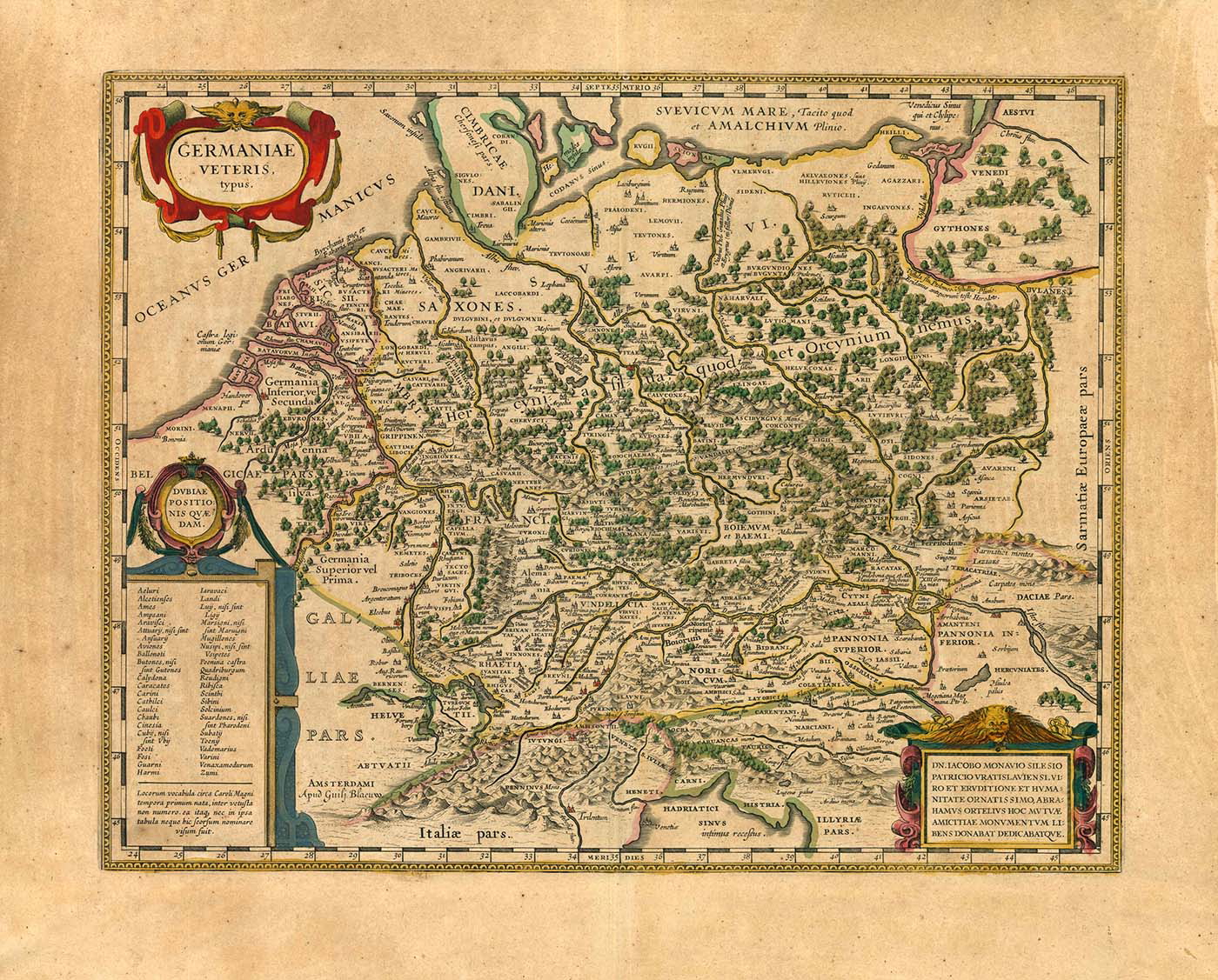
Rome’s northern frontiers—the Limes—which bordered the vast region known as Germania, had for a long time been recognized as a testing ground. It was here that reputations could be made, but it was also here that legacies could be tarnished forever. For every emperor who claimed the triumphal title Germanicus Maximus to augment their glory, there was the grisly reminder of what had happened to Publius Quinctilius Varus, who was massacred with his legions in the Teutoberg Forest in 9 CE.
Over the course of the 3rd century, the makeup of Germania had shifted somewhat, with the groups in the region beginning to coalesce into larger federations. These included the Burgundians of central Germania, the Franks, located in the northwest, and the Alamanni, who resided in the southwest of the territory. The Alamanni had first come to the attention of the Romans in the early 3rd century when the emperor Caracalla waged a war against them in 213 (the strategic purpose of Caracalla’s campaign, beyond allowing the emperor to call himself Germanicus Maximus, remains largely unclear).
During the crisis years of the mid-3rd century (260 CE), the Alamanni actually captured the territory known as the Agri Decumates, which was between the Rhine, Main, and Danube rivers. If the territory was ever recovered—during the reign of Aurelian, perhaps—it was fleeting; it remained under Germanic control thereafter.
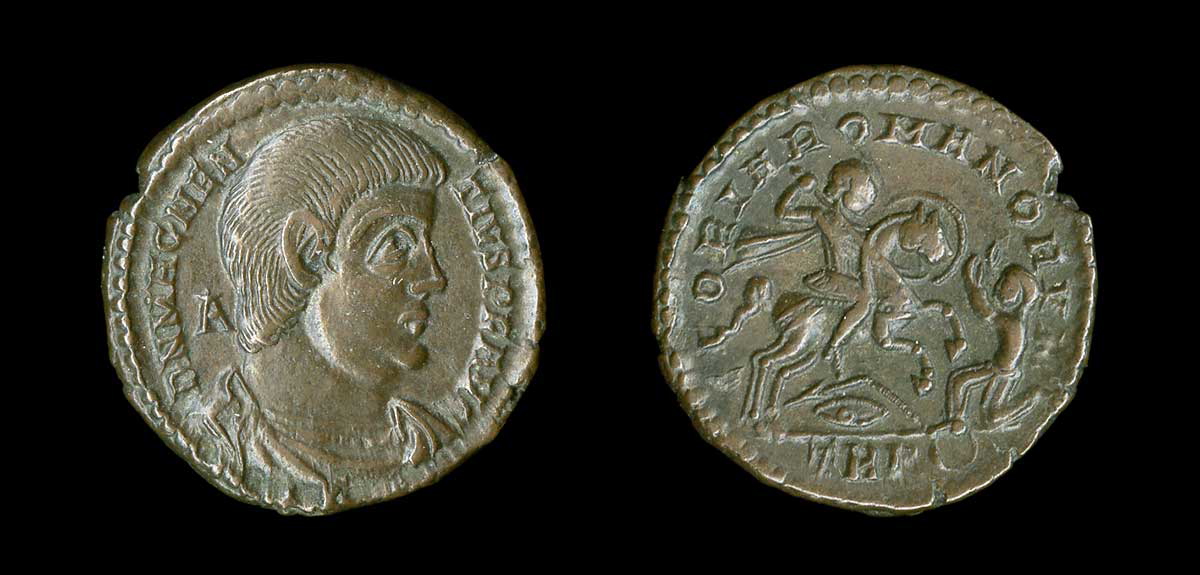
Sensing an opportunity after Magnentius had murdered Constans in 350, the Alamanni spilled over the Rhine frontier and into Roman territory. Fortifications along the bank of the Rhine were seized, and the Alamanni used these as bases from which to launch raids into the province of Gaul. Their assaults were orchestrated by two kings, Westralp and Chnodomar, with the latter very much presented as the driving force. He was a giant of a man (nicknamed Gigas by the Romans) and a charismatic, imposing leader.
By the time Constantius II elevated Julian to the rank of Caesar and tasked him with resolving the chaotic situation in Gaul, the Alamanni had devastated the region. According to Ammianus Marcellinus, a number of notable cities had already fallen to the invaders, including Mogontiacum (Mainz), Saliso (Seltz), and Argentorate (Strasbourg); only Colonia Agrippina (Cologne), which was heavily fortified, had held out. Across the countryside, bands of brigands roamed unchecked. It was such a perilous position that cynical members of Constantius’ court considered Julian’s posting to be fruitless: it was an easy, innocent way for the emperor to remove yet another potential rival.
Julian: Philosopher, Pagan, Princeps
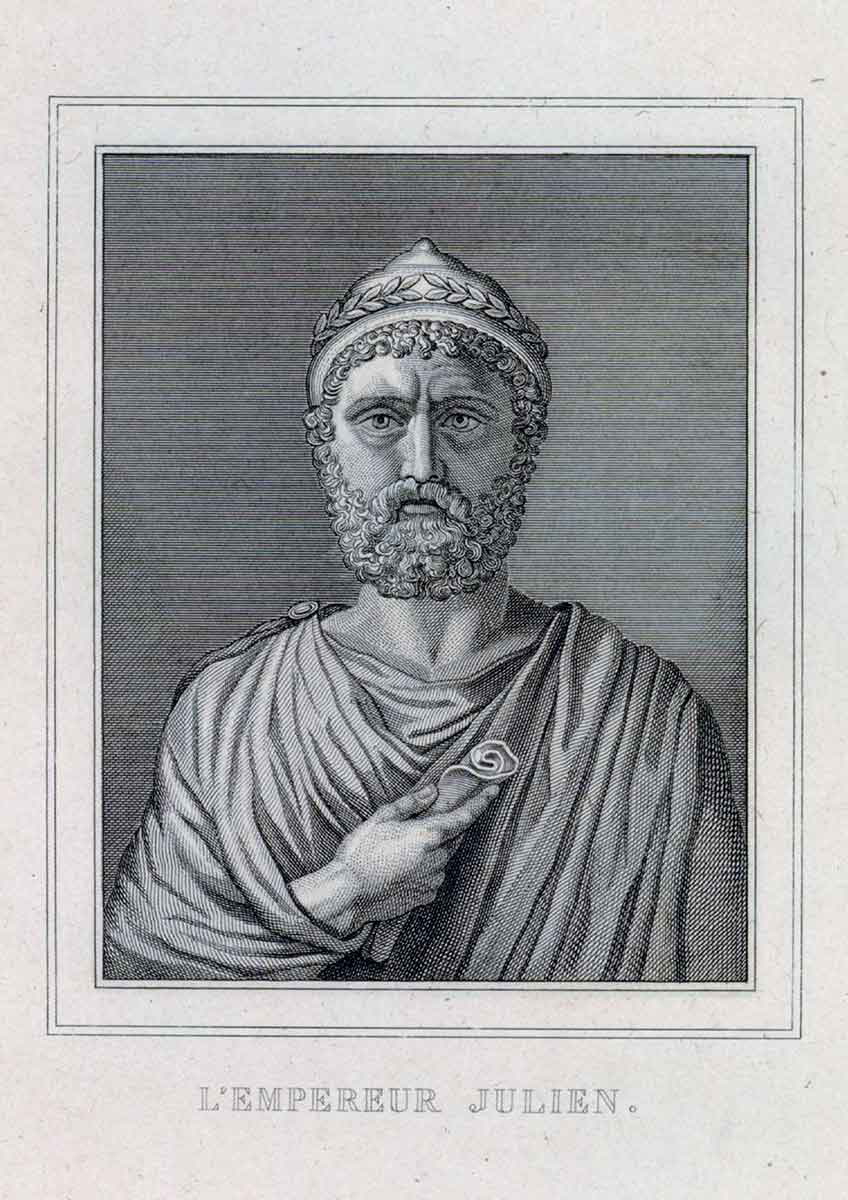
As a young man, Julian had grown up in the fractious world of late antique politics. He was a nephew of Constantine the Great, and this positioned the young man within the extended house of Constantine. This also placed Julian in an environment that was frequently violent, as brothers and cousins transformed from allies to rivals, often with blood-soaked consequences. His cousin, the emperor Constantius II, had orchestrated a series of purges of the wider Constantinian dynasty during the 330’s CE, and victims included Julian’s father, Julius Constantius, who was executed in 337. Thereafter, Julian was kept under close supervision and far from the centers of power. He spent much of his younger years in Bithynia, and later Cappadocia, where he resided with his brother, Constantius Gallus, at the imperial estate of Macellum.
It was during his youth that Julian appears to have undergone the transformation for which he is most notorious. He rejected the Christian faith and instead worshiped the older, pagan deities. The process may have begun while he was at Macellum, as it was there that Julian had met George of Cappadocia. Although George was a Christian bishop, he had lent the young Julian a number of works from the classical tradition, which appear to have piqued the young man’s interest. Although he did become a lector (a minor official in the Church) for a brief period, because Julian was a prodigious writer during his life, historians know that, as far as the man himself was concerned, his conversion to paganism took place when he was around 20 years old.

While Julian continued his education as a young man, absorbing philosophical ideas in the cosmopolitan cities of the eastern Roman Empire, his cousin Constantius II faced increasing challenges to his authority. Although he had quelled, for a moment, the uprising of Magnentius, the emperor evidently felt that he could only entrust the task of restoring and maintaining control in Gaul to a close member of his family. By this stage, only Julian was left as a viable option. In 355, the young man was summoned to the emperor’s court at Mediolanum (Milan) and made Caesar. Although he appears to have been initially reluctant to leave his former life behind, Julian—as it had been for other Roman leaders in the century before him—would make his name on the battlefields of Gaul and Germania.
Documenting the Battle: Ammianus Marcellinus

When it comes to sources for the reign of Julian, compared to other emperors, historians are rather spoilt in terms of literary sources. Although it can still be difficult to piece together the motives and causes for the more metaphysical aspects of Julian’s character, his many writings allow us a precious insight into the character of the man in a way that is not really possible with almost any other ruling figure from the ancient world. His works include his many letters, through to the mockery of his imperial ancestors in his Caesars, and his satirical riposte to the criticisms of Antiocheans, the Misopogon, or “Bead-Hater.” Alongside Julian’s own writings, there is also the history of Ammianus Marcellinus. His Res Gestae stands as the penultimate piece of classical historiography in the grand tradition that began with Herodotus and Thucydides and ends with Procopius.
Born in around 330 CE in the east of the Empire, Ammianus was a Greek-speaking official and soldier of the later Roman Empire. However, the history that he wrote was in Latin. Regrettably, the work does not survive intact. The Res Gestae began with the accession of Nerva in 96 CE following the assassination of Domitian and culminated in the catastrophic defeat of the Romans at the Battle of Adrianople in 378, which cost the emperor Valens his life. However, only those books detailing the period 353 to 378 survive. The historian’s narrative therefore deals with the reign of Julian, and he is an enthusiastic supporter of the young emperor, likening him to an illustrious roll-call of the “good” emperors of old: to Ammianus, Julian was as good a general as Trajan, as calm as Antoninius Pius, and a conscious emulator of the stoic Marcus Aurelius. The two men would have first met in Gaul, when Ammianus was stationed in the province to help restore order and to assist with the establishment of Julian as the Caesar in the region. It is possible that the historian’s good opinion of Julian derives from their shared religious sentiment. However, the historian was shrewd enough to recognize the cruelty practiced by those devoted to both Christianity and paganism.
Julian’s Triumph: The Battle of Strasbourg
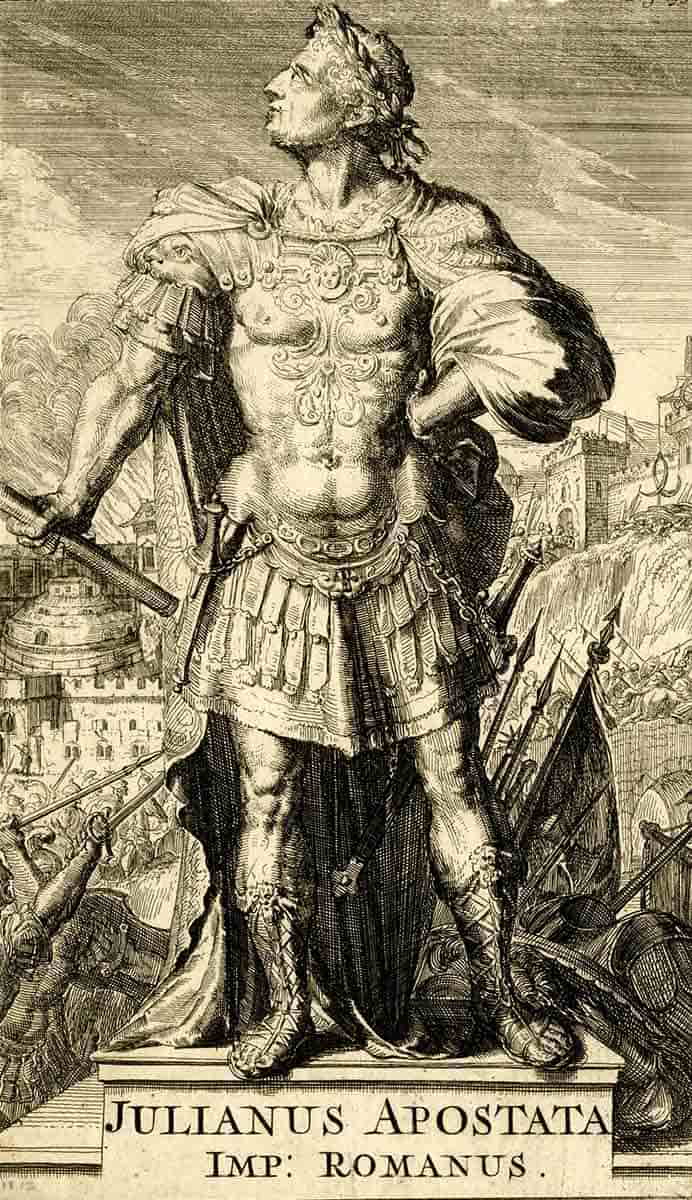
Now the Caesar in the west, Julian set to work restoring Roman order along the Rhine. Any optimism from early successes was soon tempered by the harsh lessons of a siege of Julian and his forces when they wintered at the town of Vernon in 356-7. Worse was to come in the following year. An attempted joint operation against the Alamanni was left in tatters when Julian’s own forces were delayed by an attack on Lugdunum. The forces of Barbatio, the magister peditum who had been advancing into Alamanni territory, did not proceed, and the proposed operation broke down. According to Ammianus, it was at this time that Barbatio simply decamped his soldiers and returned to the court of Constantius II. His actions, so far as they are recounted by Ammianus, are presented as part of a machiavellian scheme by the emperor to orchestrate Julian’s death in combat (to save the emperor the trouble of having another family member murdered).
Buoyed by the absence of the joint Roman forces, the Alammani king, Chnodomarius, advanced, sensing an opportunity to deliver a crushing blow against the heavily outnumbered Roman forces under Julian’s command. The two armies met near Argentoratum (modern Strasbourg) in the summer of 357 CE. Shortly after the two forces were lined up and prepared to engage, Chnodomar blundered. Listening to the entreaties of his men to lead his army on foot and from the front, he duly dismounted and took up his position. In doing so, he sacrificed the strategic advantage to Julian, who, mounted, had the maneuverability and speed to observe the course of the battle and react with haste and authority. Despite this, the initial charge of the Roman heavy cavalry was a disaster. The cataphracts sustained heavy losses and one regiment reputedly even refused to return to the fight despite Julian’s attempts to rally them. According to the later historian, Zosimus, the punishment for this cowardice was to be paraded wearing women’s clothes after the battle!
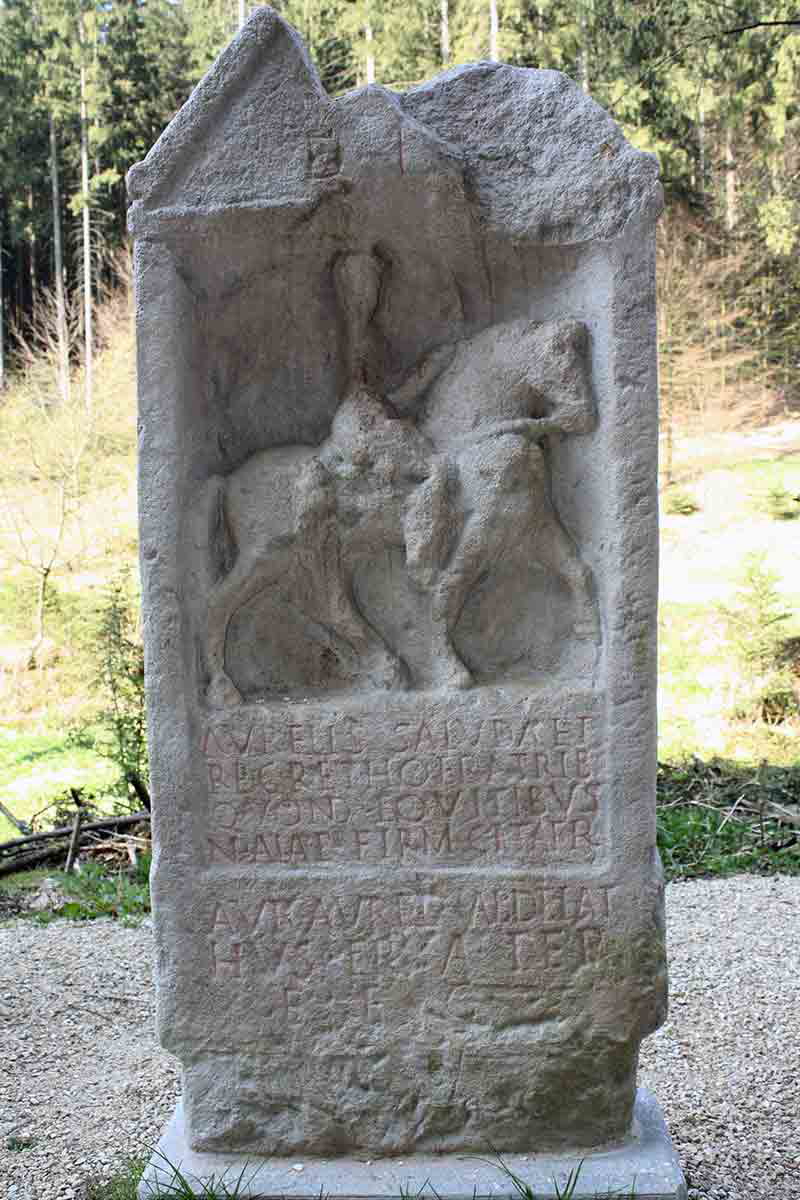
In the next phase of the battle, the German infantry advanced and actually succeeded in breaking through the center of the Roman line. Although this could—and frequently was—catastrophic, in this instance the Roman line was able to hold firm. A Roman counter attack by the elite legions in the rearguard halted the Germans and drove them back. The initiative was lost and soon the Roman forces turned on their flagging foes. As the sides of the Roman line continued to pinch inwards, forcing the Germans into a tighter and ever more deadly maelstrom, their courage eventually snapped. The German line collapsed, the battle was lost, and now they did all they could to avoid a rout.
The Rhine river in the rear represented a possible avenue of escape, but many men either drowned or were cut down by arrows or spears from the pursuing Romans. Ammianus reports that some 6,000 Germans perished at Strasbourg. As for Chnodomar, the defeated king had also tried to flee toward the Rhine and escape on some boats left there. However, he was captured by the Roman cavalry and brought before Julian. The Caesar duly dispatched the German king to the court of Constantius at Mediolanum. From there, he was sent to Rome, where he would die as a prisoner on the Caelian Hill.
After the Battle: Triumph and Fall of the Emperor Julian
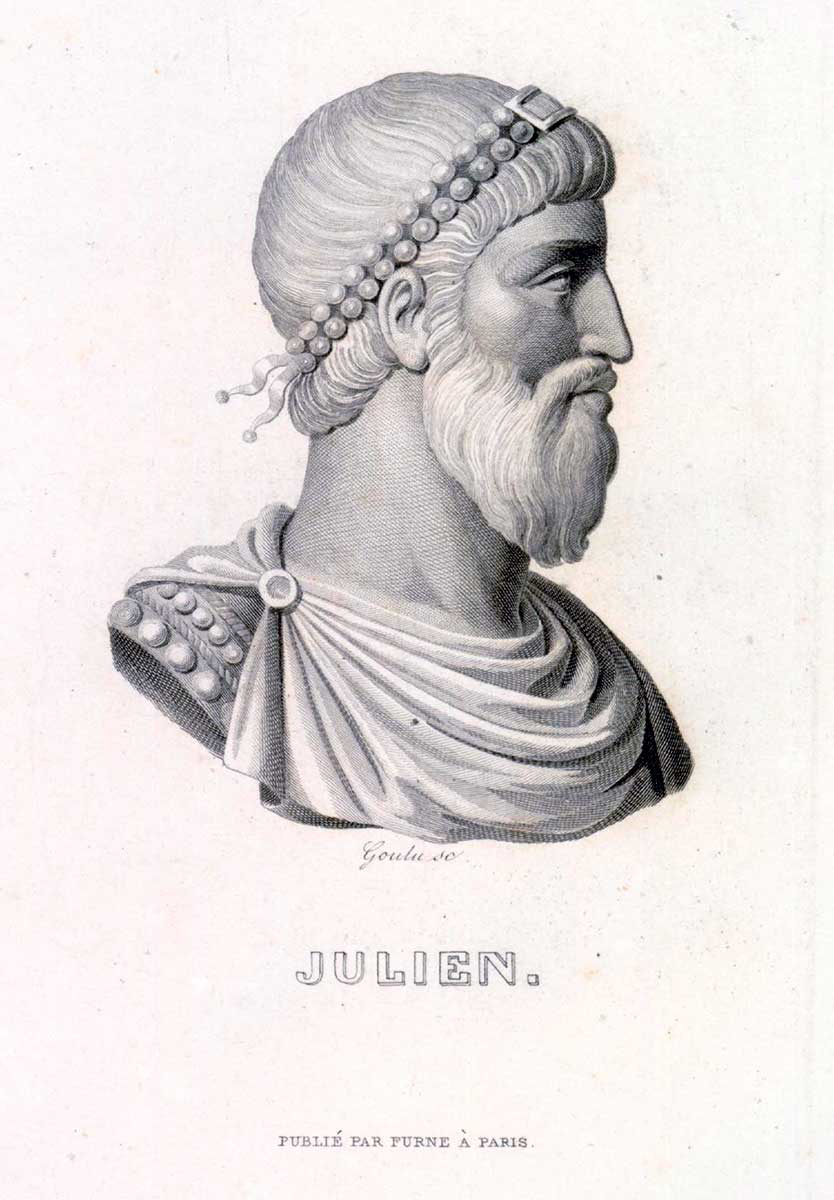
Despite his undoubted triumph, Julian’s victory at Strasbourg could have proven fatal. The soldiers under his command acclaimed Julian as Augustus (i.e. Constantius’ equal). With relations between the two already strained, news of this could have prompted the senior ruler to orchestrate Julian’s downfall. Julian, recognizing the danger, quashed the acclaim, reminding his soldiers that only Constantius had the powers to elevate him. Over the next few years, Julian busied himself with restoring order to the Rhine frontiers and Gaul. By 360, Roman control had been sufficiently re-exerted to allow Julian to dispatch a force to Britain to help drive out Pictish invaders from the north.
It was at this time that Julian received orders from Constantius to send a significant number of his men eastwards, in support of the emperor’s renewed war against the Sassanians. The soldiers threatened mutiny and again declared Julian Augustus. This time, he felt he had no option but to acquiesce. In 361, Julian took his forces and marched toward Constantius. Fortunately for the Empire—which was in no fit state for a sustained civil war—Constantius died suddenly in 361, leaving Julian as the sole Augustus.
Rather than consolidate his position, Julian opted to continue his cousin’s war in the East. It was a fatal error. At the head of an enormous army numbering some 65,000 men, Julian advanced into Mesopotamia. Despite an initial success outside the Sassanian capital of Ctesiphon, the war was an unmitigated disaster. An advance into the Persian heartland caused supply issues, with the Roman forces harried the whole way. In June 363, a skirmish among Sassanians and the Roman rearguard at Samarra escalated into a full battle, and in the melee, Julian was mortally wounded. He died shortly after, just 31 years old.
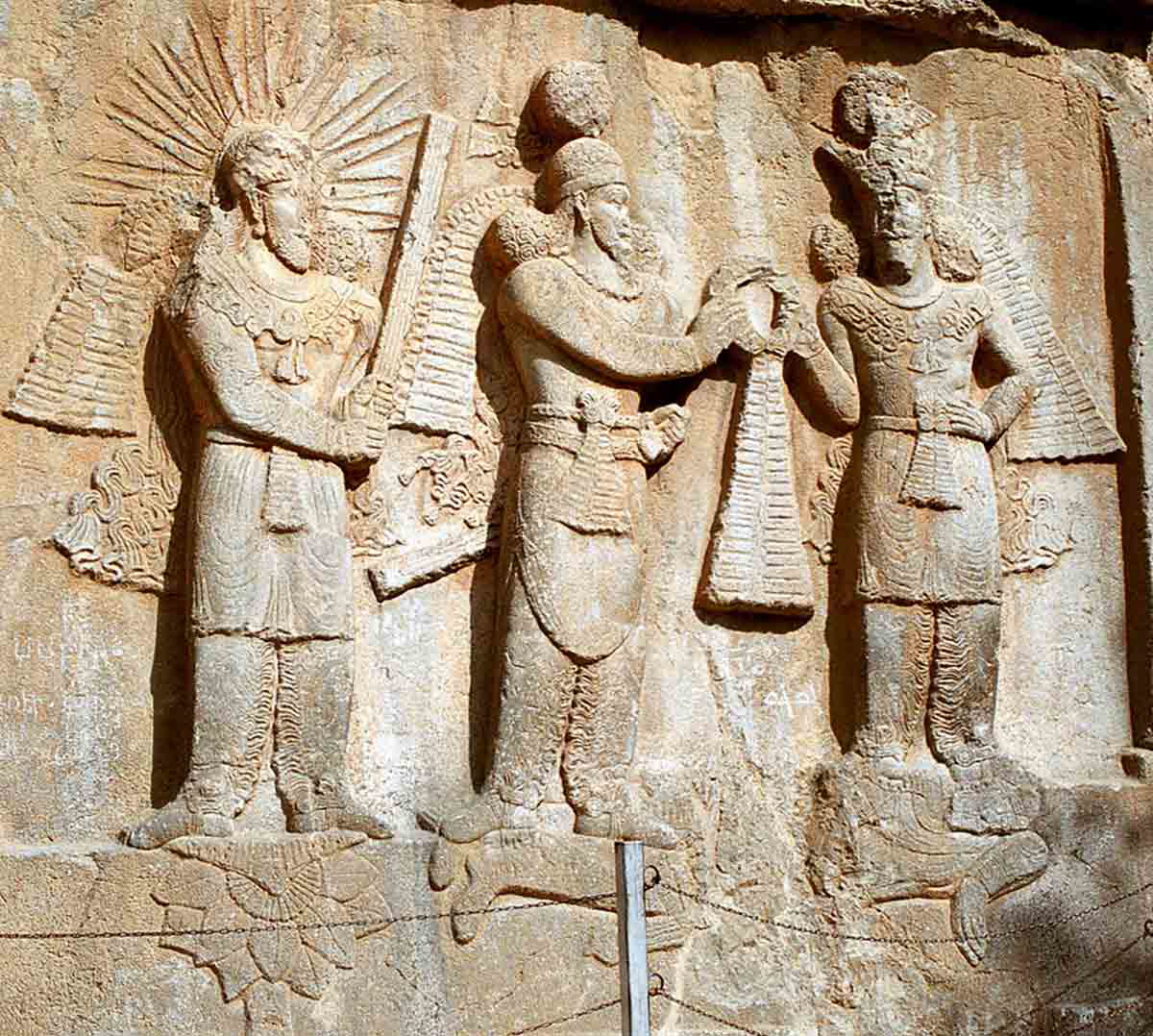
Julian’s immediate successor, a military officer called Jovian, was in no position to continue the fight against the Sassanians and was compelled to sue for peace. This was always a costly endeavor and rarely popular, and it is perhaps unsurprising that Jovian’s reign was brief. Perhaps more galling still, was the impact of Julian’s eastern war on Gaul, the site where he had triumphed. Such was the scale of the campaign against the Sassanians that men from the western frontiers were taken from their posts. It was these weakened defenses that Germanic invaders would soon again overrun. With cruel irony, Julian laid the foundations for the undoing of his own greatest triumph.
